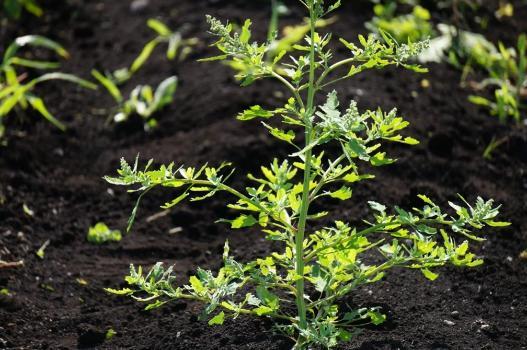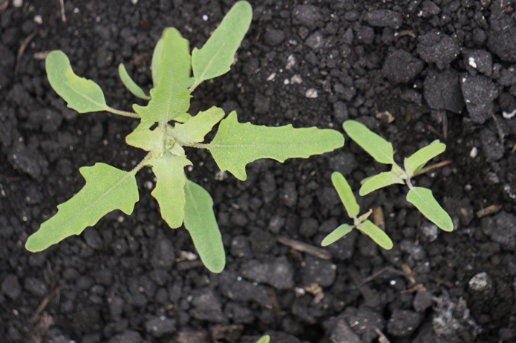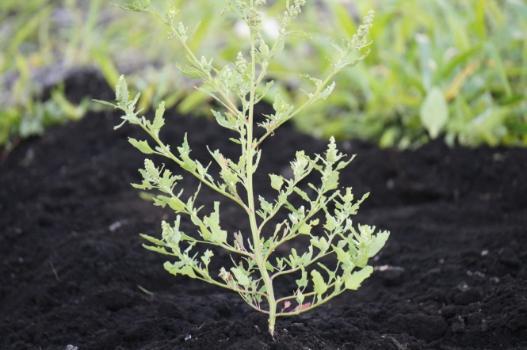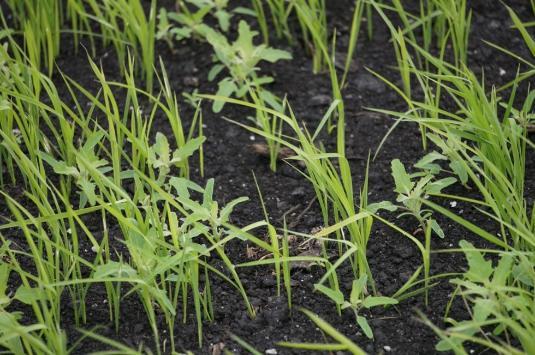Common Lambsquarters (Chenopodium album)

Chenopodiaceae (Goosefoot family)
Group: Dicot (Broadleaf)
Erect annual weed native of Eurasia commonly found in cultivated fields, disturbed sites, landscapes, and waste places. Leaves are covered by a gray-mealy coating, particularly on the surfaces of younger leaves.
Seedling cotyledons are linear, and the first true leaf is egg-shaped. Leaves are wavy or toothed with a gray-mealy coating, especially on the underside. First pair of leaves are opposite while subsequent leaves are alternate. Stems are reddish and hairless.

Leaves of mature plants are alternate, simple, with smooth long petioles. Leaves are 1/2 to 3-1/4 inches long and have a distinctive white mealy or powdery coating on the bottom side of the leaf with a more waxy-appearing white coating on the upper leaf surface. Leaf edges are smooth to irregularly wavy or toothed.
Flowers are small, green, in spikes and arranged along the spreading branches. Seeds are very small (1/16-inch), shiny black, with a gray covering that can be rubbed off mature seed.

Stem is erect or spreading, 3 inches to 6 feet tall, with numerous ascending branches. Stem is often with vertical green or red lines and hairy.
Root is fibrous with a short-branched taproot.
Propagation is by seed. It often emerges during the winter months in south Florida and is found in many fields in the early spring.

